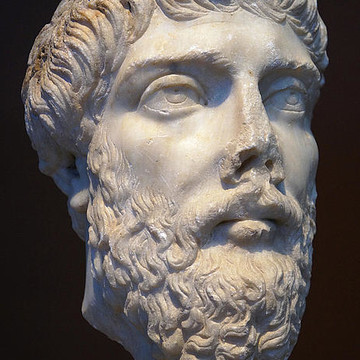Looking for design inspiration? Browse our curated collections!
Joined
2011
Followers
26
Visitors
463,177

Ancient Macedonia
The kingdom of Macedon was founded and initially ruled by the royal Argead dynasty which was followed by the Antipatrid and Antigonid dynasties. The earliest kingdom of Macedonians was centered on the northeastern part of the Greek peninsula and bordered by Epirus to the west, Paeonia to the north, Thrace to the east and Thessaly to the south. The name Macedonia is derived from the ancient Greek adjective μακεδνός (makednós), meaning "tall, slim", also the name of a people related to the Dorians (Herodotus) and possibly descriptive of ancient Macedonians. The name is believed to have originally meant either "highlanders", "the tall ones", or "high grown men". Before the 4th century BC, Macedonia was a small kingdom outside of the area dominated by the great city-states of Athens, Sparta and Thebes, and briefly subordinate to Achaemenid Persia. During the reign of the Argead king Philip II (359–336 BC), Macedonia subdued mainland Greece and the Thracian Odrysian kingdom through conquest and diplomacy. With a reformed army containing phalanxes wielding the sarissa pike, Philip II defeated the old powers of Athens and Thebes in the Battle of Chaeronea in 338 BC. Philip II's son Alexander the Great, leading a federation of Greek states, accomplished his father's objective of commanding the whole of Greece when he destroyed Thebes after the city revolted. During Alexander's subsequent campaign of conquest, he overthrew the Achaemenid Empire and conquered territory that stretched as far as the Indus River. For a brief period, his Macedonian Empire was the most powerful in the world – the definitive Hellenistic state, inaugurating the transition to a new period of Ancient Greek civilization. Greek arts and literature flourished in the new conquered lands and advances in philosophy, engineering, and science spread throughout much of the ancient world. Of particular importance were the contributions of Aristotle, tutor to Alexander, whose writings became a keystone of Western philosophy. Τhe court language of Philip II of Macedon's regime, authors of ancient Macedonia wrote their works in Koine Greek, the lingua franca of late Classical and Hellenistic Greece. Rare textual evidence indicates that the native Macedonian language was either a dialect of Greek similar to Thessalian Greek and Northwestern Greek or a language closely related to Greek. The vast majority of surviving inscriptions from ancient Macedonia were written in Attic Greek and its successor Koine.
Page #1 of 5